Pink Sunstone is a type of feldspar, characterized by its pink to reddish-pink coloration and the presence of reflective inclusions that give it a sparkling effect known as aventurescence. It belongs to the same mineral family as moonstone and labradorite, both of which are also known for their optical phenomena.
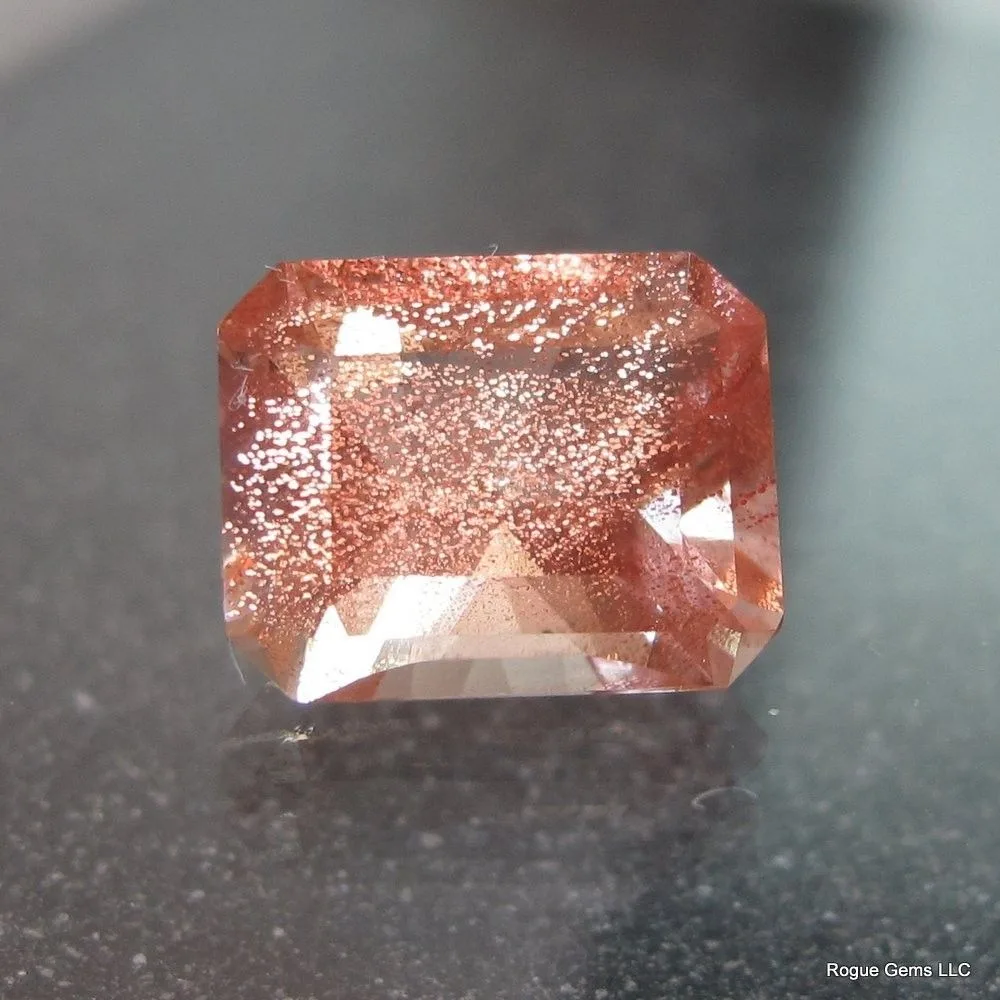
Brief History and Discovery: Sunstone, including the pink variety, has been known and used for centuries. Historically, it was primarily found in Norway, where it was used by ancient Vikings as a navigation aid due to its ability to polarize light and indicate the direction of the sun even in overcast conditions. Pink Sunstone, specifically, may have been discovered alongside other varieties of sunstone in these regions.
In more recent times, significant deposits of Pink Sunstone have been found in various locations, including the United States, Tanzania, and Madagascar. These discoveries have led to increased interest and appreciation for this gemstone among collectors and jewelry enthusiasts.
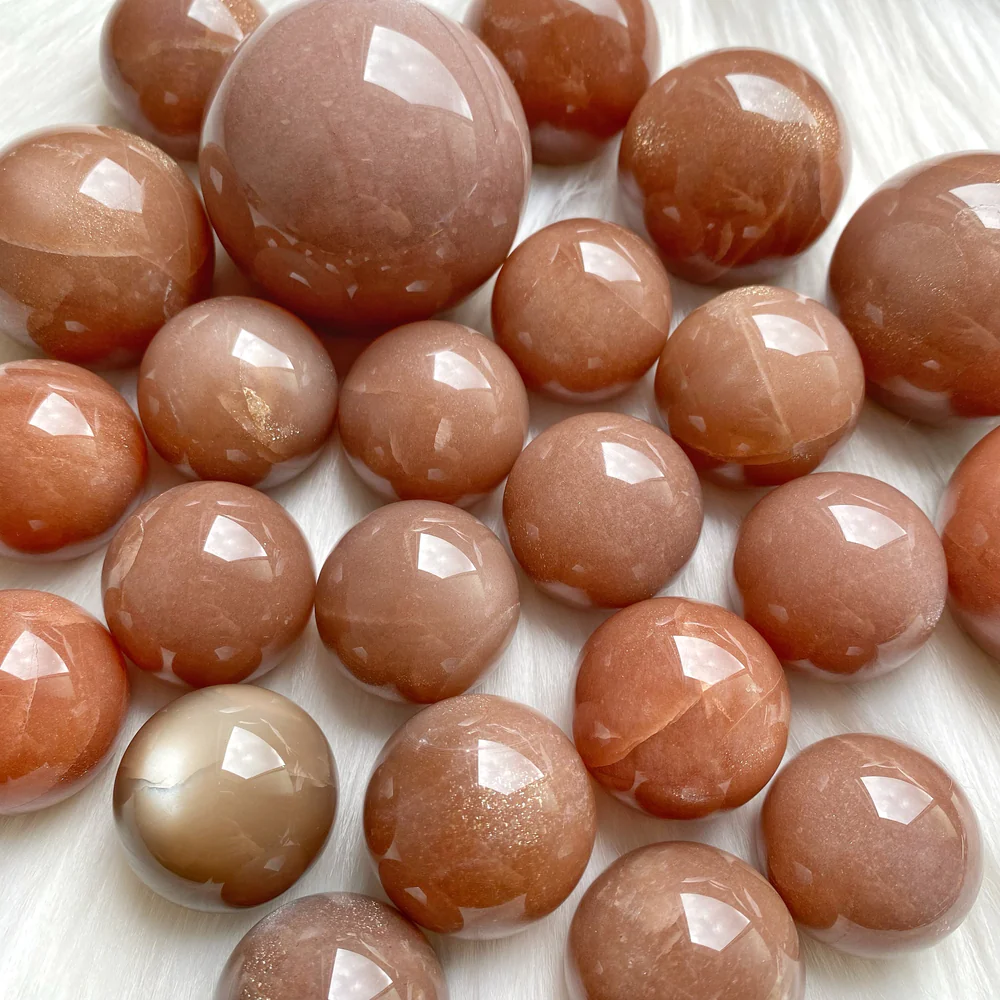
Importance and Significance: Pink Sunstone holds significance both as a gemstone and as a mineral with unique optical properties. Its attractive pink coloration, combined with the captivating sparkle caused by light reflection off internal inclusions, makes it a sought-after material for use in jewelry. Pink Sunstone jewelry, including earrings, necklaces, and bracelets, is often prized for its beauty and rarity.
Beyond its ornamental value, Pink Sunstone carries symbolic meanings associated with love, passion, and vitality due to its warm pink hues. Some believe it to possess metaphysical properties, such as promoting creativity, enhancing intuition, and fostering emotional balance.
In summary, Pink Sunstone is a beautiful and unique variety of feldspar prized for its pink coloration and sparkling appearance. Its history, discovery, and significance contribute to its allure as a gemstone with both aesthetic and symbolic value.
Geological Formation
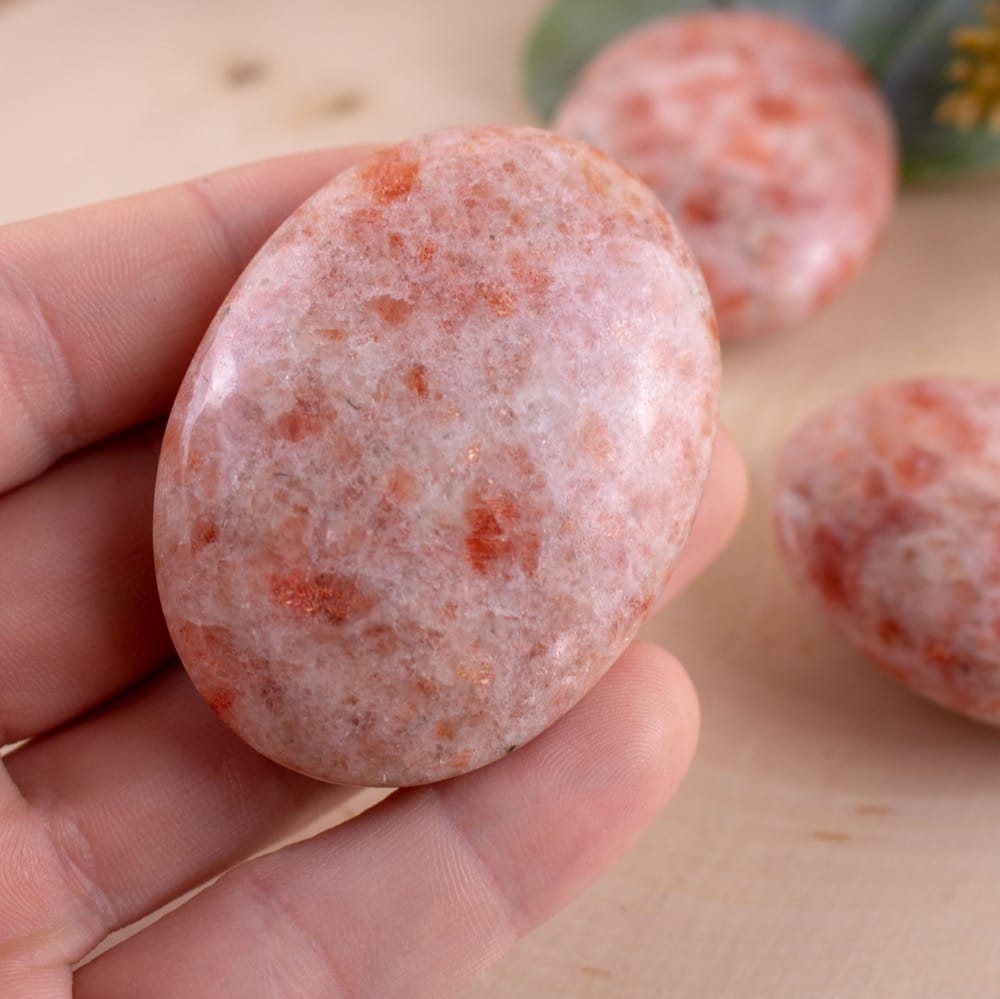
Pink Sunstone, like other varieties of sunstone, forms in igneous rocks, particularly within a type of rock called pegmatite. Pegmatites are coarse-grained igneous rocks that form from the cooling of magma deep within the Earth’s crust. These rocks often contain a variety of minerals, including feldspar, quartz, mica, and various trace elements.
The pink coloration in Pink Sunstone is typically due to the presence of copper impurities within the feldspar crystals. As the magma cools and solidifies, these copper impurities become trapped within the feldspar matrix, giving rise to the characteristic pink to reddish-pink coloration.
The sparkling effect, known as aventurescence, is caused by the presence of reflective mineral inclusions within the feldspar crystals. These inclusions are often composed of other minerals such as hematite or goethite. When light enters the stone, it interacts with these reflective inclusions, producing the shimmering effect that is characteristic of sunstone.
The formation of Pink Sunstone can take millions of years, as the pegmatite rocks slowly cool and crystallize deep within the Earth’s crust. Over time, geological processes such as uplift, erosion, and weathering can bring these sunstone-bearing rocks closer to the surface, where they may be discovered and mined for their valuable gemstone material.
Physical Characteristics
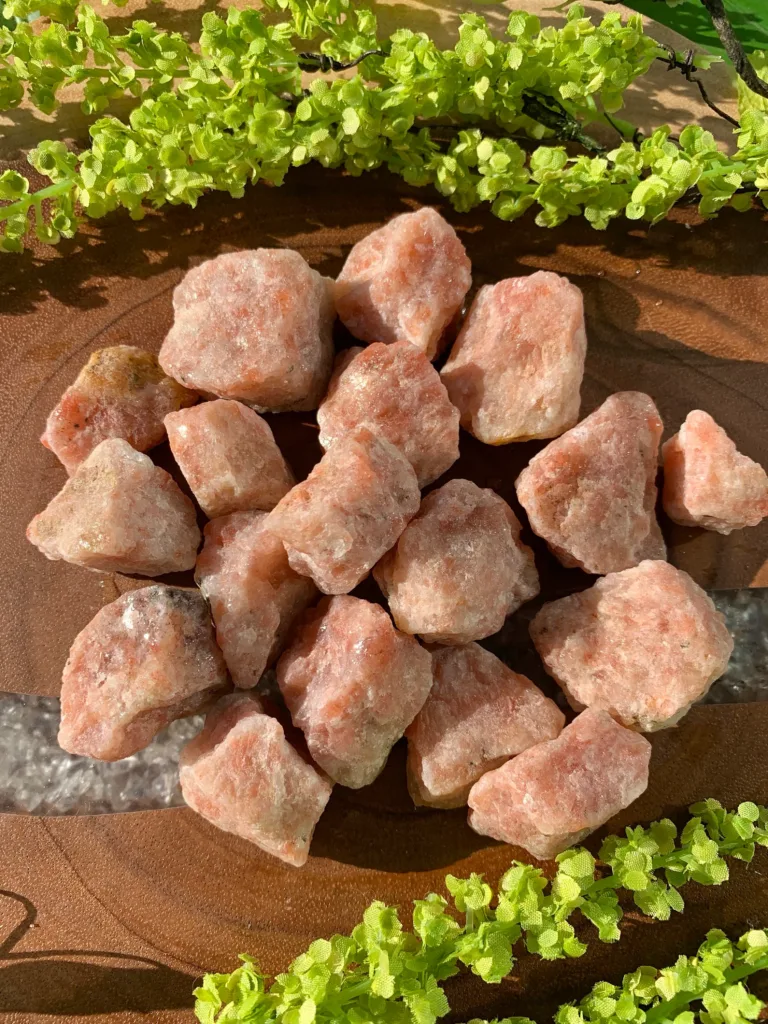
Pink Sunstone, like other varieties of sunstone, exhibits several physical characteristics that contribute to its unique appearance and beauty. Here are some of its notable physical properties:
- Color: Pink Sunstone is primarily characterized by its pink to reddish-pink coloration, which can range from pale pink to deep, vibrant shades. This color is typically caused by the presence of copper impurities within the feldspar crystals.
- Aventurescence: One of the most distinctive features of Pink Sunstone is its aventurescence, which refers to the shimmering or sparkling effect observed when the stone is viewed under certain lighting conditions. This optical phenomenon is caused by the presence of reflective mineral inclusions within the feldspar crystals, such as hematite or goethite.
- Transparency: Pink Sunstone is typically translucent to opaque, meaning that light can pass through it to varying degrees. The degree of transparency can influence the stone’s overall appearance and how light interacts with it to produce the aventurescent effect.
- Mohs Hardness: Pink Sunstone has a hardness ranging from 6 to 6.5 on the Mohs scale. While moderately hard, it is still susceptible to scratching and abrasion, particularly when compared to harder gemstones like diamond or sapphire.
- Lustre: Pink Sunstone exhibits a vitreous (glassy) lustre when polished, giving it a smooth and reflective surface that enhances its beauty.
- Crystal Structure: Pink Sunstone belongs to the feldspar mineral group and typically exhibits a triclinic crystal structure. This crystal structure can influence the stone’s optical properties and how light is refracted and reflected within its internal structure.
- Cleavage: Like other feldspar minerals, Pink Sunstone displays two directions of cleavage that intersect at approximately 90 degrees. This cleavage can affect how the stone is cut and shaped during the lapidary process.
These physical characteristics contribute to the overall allure and desirability of Pink Sunstone as a gemstone, making it a popular choice for jewelry and decorative items.
Uses and Applications
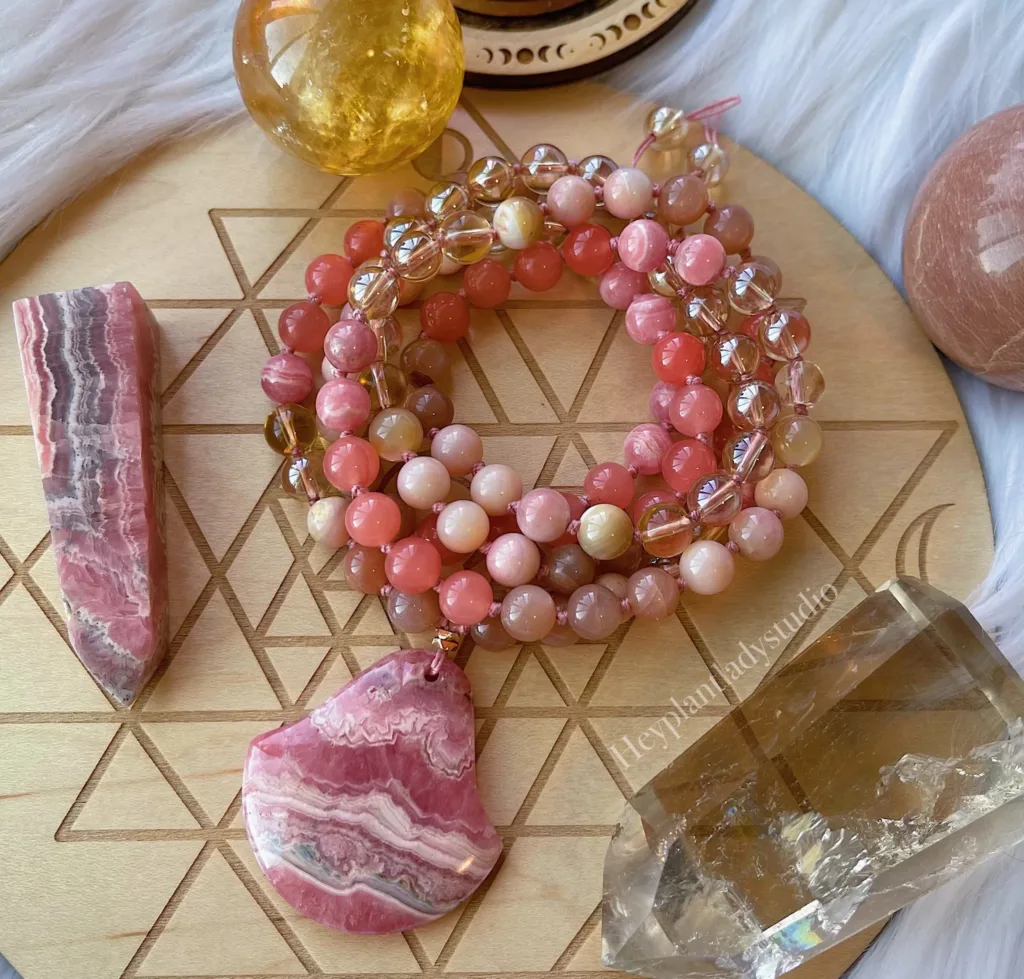
Pink Sunstone, prized for its attractive appearance and unique optical properties, finds various uses and applications:
- Jewelry: One of the primary uses of Pink Sunstone is in jewelry making. The gemstone is often cut and polished into cabochons, beads, or faceted stones and set into earrings, pendants, rings, bracelets, and other jewelry pieces. Its warm pink hues and sparkling aventurescence make it a popular choice for both casual and formal jewelry designs.
- Ornamental Objects: Pink Sunstone is also used to create ornamental objects and decorative items. It can be fashioned into carvings, figurines, sculptures, and other artistic pieces, showcasing its natural beauty in various forms.
- Collectibles: Collectors often seek out Pink Sunstone specimens for their rarity and aesthetic appeal. Fine-quality Pink Sunstone specimens with intense coloration and strong aventurescence can command premium prices among gem and mineral enthusiasts.
- Metaphysical and Spiritual Practices: Some individuals believe in the metaphysical properties of gemstones, including Pink Sunstone. It is thought to possess healing energies, promote emotional well-being, enhance creativity, and stimulate the heart chakra. As such, Pink Sunstone may be used in crystal healing practices, meditation, and spiritual rituals.
- Lapidary Art: Pink Sunstone is valued by lapidaries and artisans for its workability and beauty. Skilled lapidaries can cut, shape, and polish Pink Sunstone into custom designs, showcasing its natural color and aventurescent effects.
- Gifts and Souvenirs: Pink Sunstone jewelry and decorative items make thoughtful gifts for special occasions such as birthdays, anniversaries, and holidays. Additionally, Pink Sunstone souvenirs serve as reminders of visits to locations where the gemstone is mined or sold.
- Industrial Applications: While less common, Pink Sunstone may have industrial applications in sectors such as optics and electronics. Its optical properties and ability to polarize light could potentially be utilized in specialized lenses or optical instruments.
Overall, Pink Sunstone’s versatility and aesthetic appeal make it a prized gemstone with diverse uses and applications across various industries and practices.
Geological regions where pink sunstone is found

Pink Sunstone is primarily found in several geological regions around the world, where specific geological conditions favor its formation. Some of the notable regions where Pink Sunstone is found include:
- United States (Oregon): Oregon is renowned for its deposits of Pink Sunstone, particularly in the southeastern part of the state near the towns of Plush and Lakeview. This region is known for producing high-quality Pink Sunstone with vivid coloration and strong aventurescence. The gemstone is found in placer deposits and can be mined from basalt flows and alluvial deposits.
- Tanzania: Tanzania is another significant source of Pink Sunstone, particularly in the Tunduru district in the southern part of the country. Pink Sunstone from Tanzania often exhibits rich pink hues and attractive aventurescence. The gemstone is found in alluvial deposits and is mined through small-scale operations.
- Madagascar: Madagascar is known for its diverse gemstone deposits, including Pink Sunstone. The gemstone is found in various regions across the country, with some notable deposits in the Antananarivo Province. Pink Sunstone from Madagascar may exhibit a range of pink shades and unique inclusions.
- Norway: While historically significant for its deposits of traditional sunstone, Norway also produces Pink Sunstone in limited quantities. The gemstone is found in pegmatite deposits in the Telemark region and other areas known for sunstone mining.
These regions are known for their Pink Sunstone deposits, but the gemstone may also be found in smaller quantities in other parts of the world, including Australia, India, and Canada. However, Oregon, Tanzania, Madagascar, and Norway remain the primary sources of high-quality Pink Sunstone available in the market.




































